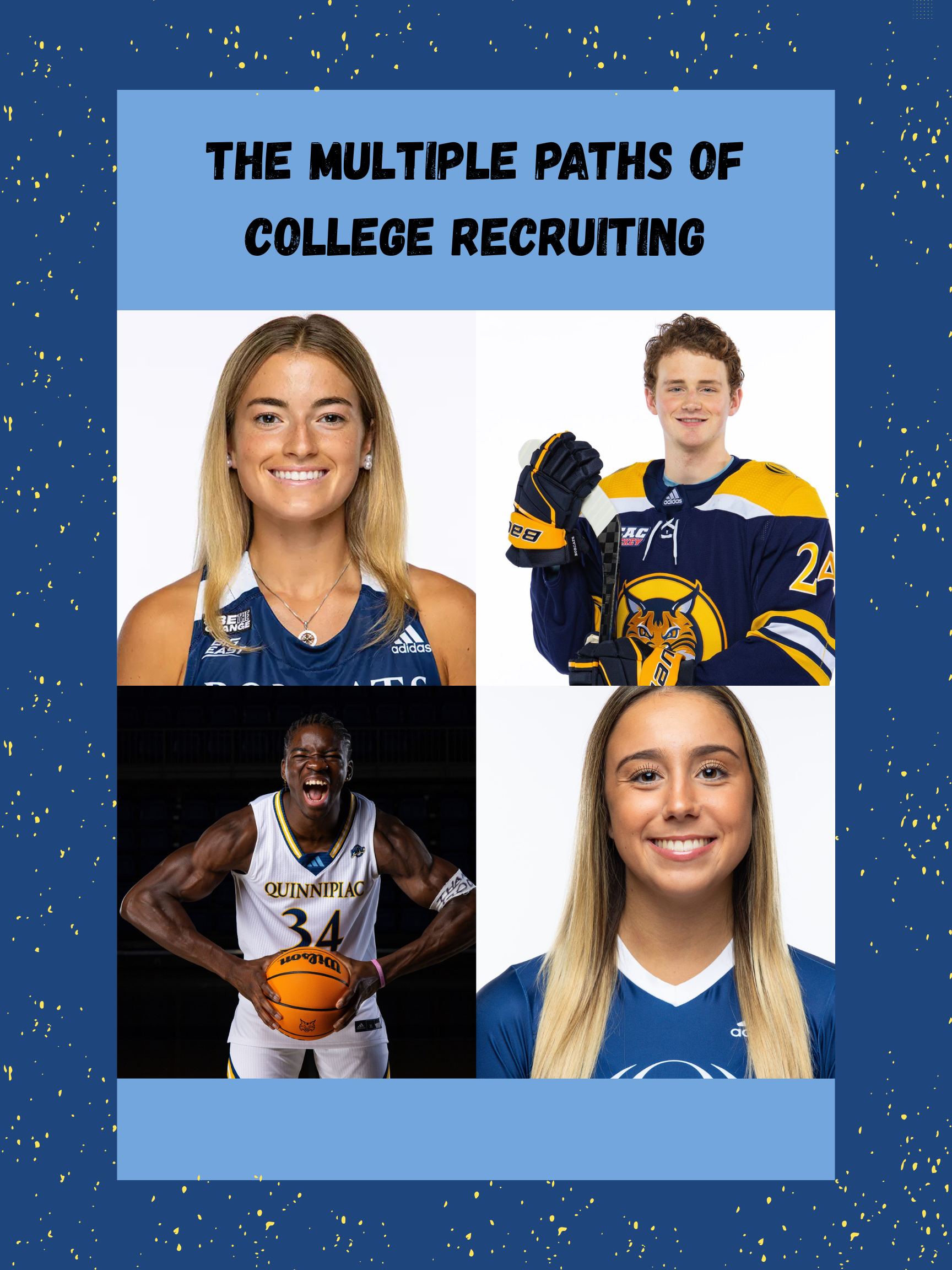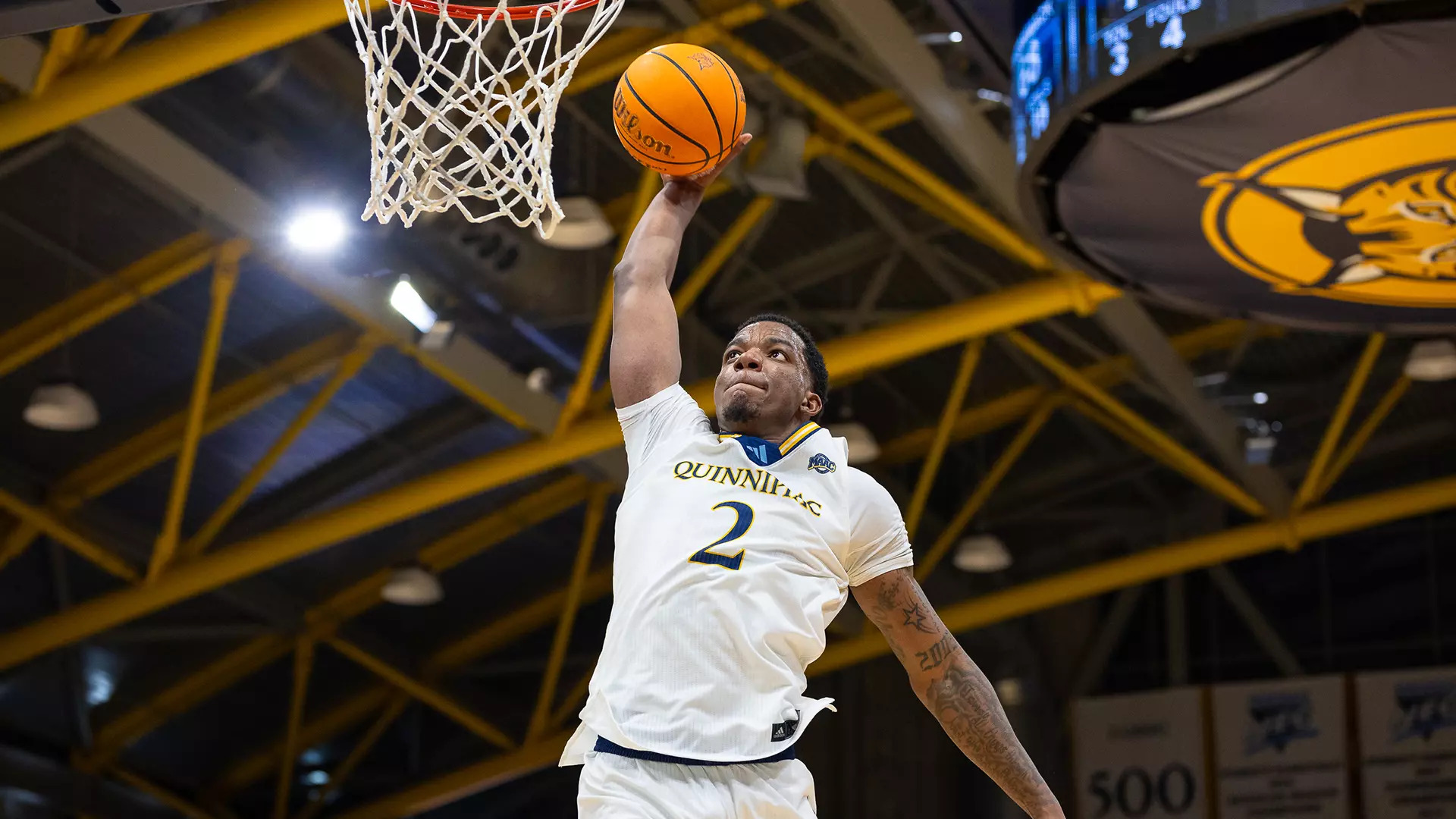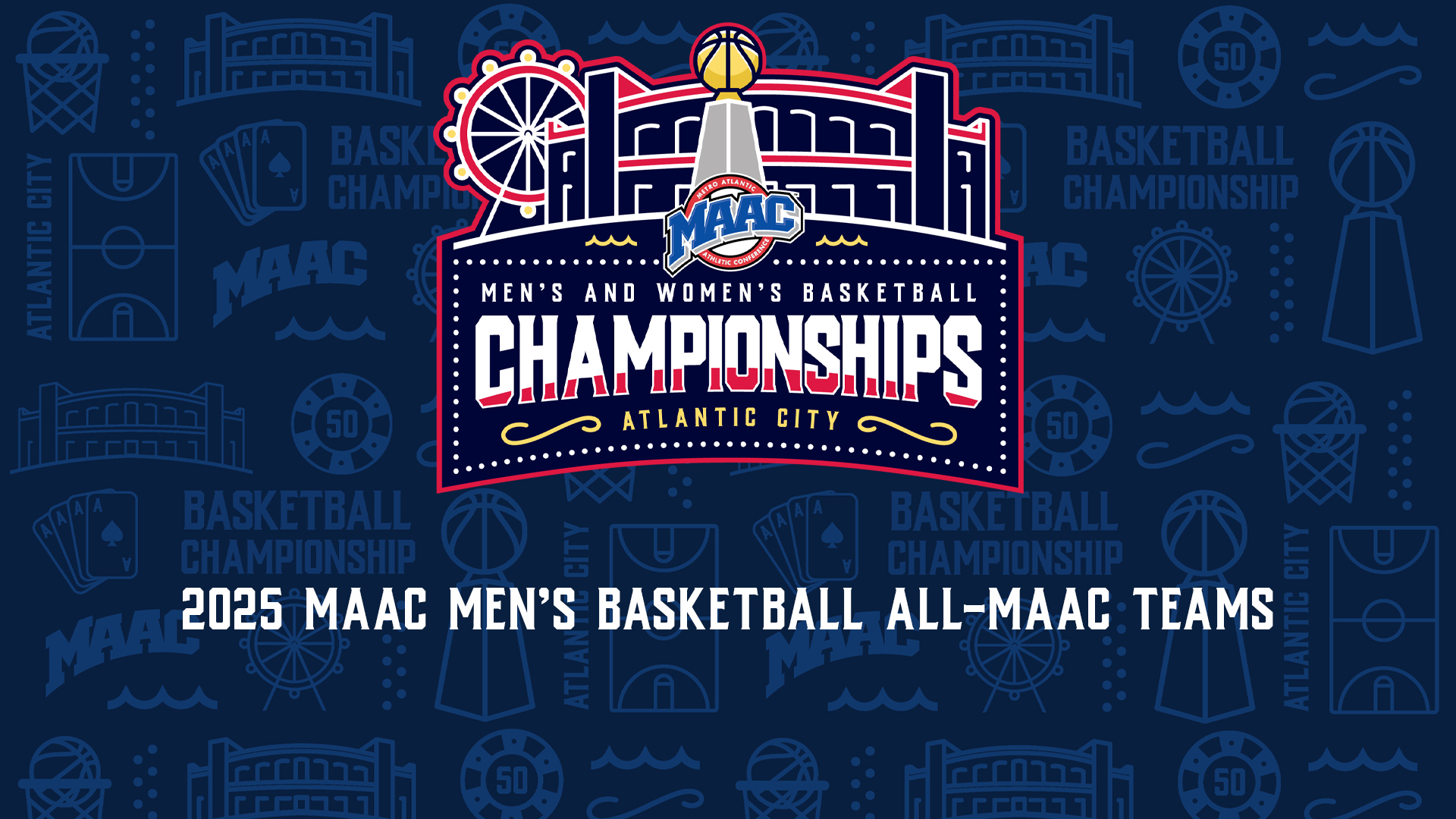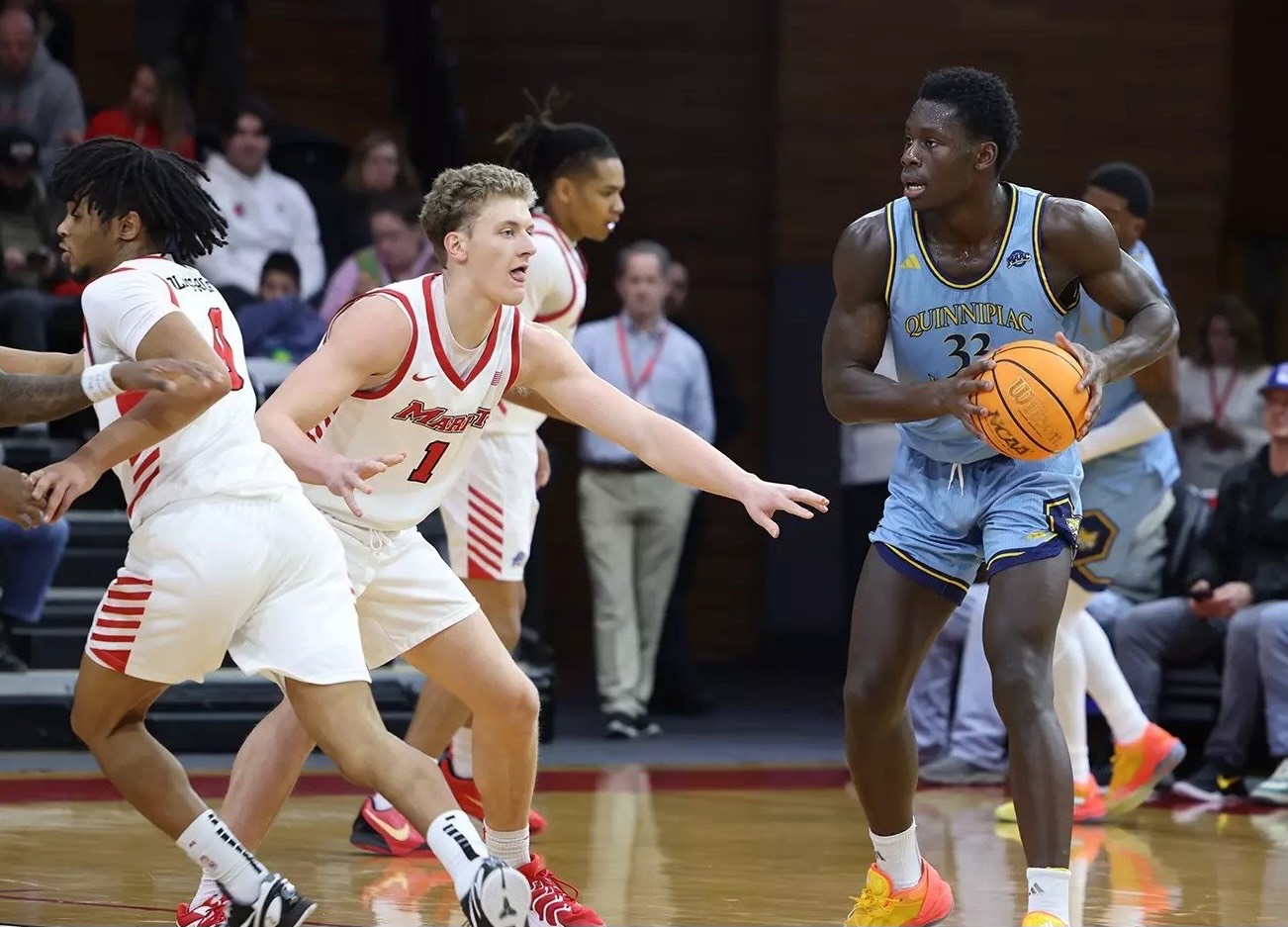To become a Division I athlete, the journey and the path to get there is a long one that varies from athlete to athlete. Different sports have different paths to ultimately get to the collegiate level. In some sports that pathway starts early on, and for other sports that pathway develops later. While that goal and ambition for these athletes remain the same, the process of getting there is not consistent.
Recruiting in college athletics has never followed a one-size-fits-all model, but the differences in recruitment between sports have only continued to widen with the nature of college sports today. In some sports, attending camps and showcase tournaments early on in middle school and high school are required. For other sports, athletes discover opportunities later in their high school careers, often through informal connections, or high school sports. In less well-known or emerging sports, recruiting remains a player-led process, built on highlight videos and reaching out to coaches.
The recruiting journeys for athletes from various teams at Quinnipiac University highlight how different recruitment can look even at the same school. Through the stories of athletes in men’s hockey, field hockey, men’s basketball, and acrobatics & tumbling at Quinnipiac, it shows how the process to earn a roster spot in Division I athletics is a long road with many ups and downs.
Different Sports, Different Timelines
An athlete’s recruiting journey can often define the rest of their college pathway. But the question of when that process starts and what it looks like depends heavily on what sport they play and their background in that sport.
Hockey: Early Exposure, Long Waits
For men’s hockey, committing early is common, many hockey players are scouted through showcases in ninth or tenth grade or through junior hockey programs and national tournaments. The hockey recruitment path relies heavily on early development leagues like the USHL or prep school circuits, which act as pipelines for Division I hockey programs. Hockey players are usually scouted many years before they step foot on a college campus.
However, even early commitments don’t mean immediate arrivals on those college campuses. Many players will go to play juniors after high school because they aren’t physically ready for the pace of college hockey yet. The college hockey path is a long one and the dream is oftentimes developed early.

For Alex Power, a junior on Quinnipiac’s hockey team, the dream of playing college hockey started as early as he can remember. Growing up in Canada not playing hockey was not really an option and he always looked to play at the next level. When he was in prep school, he was faced with a decision familiar to many Canadian hockey players: pursue the major junior route or aim for NCAA hockey. Power was drafted to a major junior team and attended their camp when he was 16, but he already knew the path he wanted to take.
“I always pictured myself playing college hockey, from there, I just took steps that would move me closer to that goal,” Power said.
That path did not lead him right to college hockey. It first led him to junior hockey, where he played for two years after high school. For Power, this time was a critical step on his journey, for development and for gaining exposure to college programs. His breakthrough came during a showcase event early in his second year of juniors, where all the teams in the league played in a showcase in front of dozens of NCAA scouts. That’s where he caught the attention of Quinnipiac assistant coach Mike Corbett.
From there, the process was a slow build. Conversations began casually with check-ins and gauging interest. As Power started stringing together good play on the ice the talks turned serious.
Two months after the showcase, Power took the next step on his path and committed to Quinnipiac. And while official visits are common in many sports before committing, he never made the trip to Hamden before his commitment.
“I talked to people who had been here, and everyone had great things to say, I trusted what I’d heard and seen,” Power said.
While every athlete’s story is different, Power’s recruiting journey is considered “typical” in the world of men’s hockey, especially for Canadian players. The process is a long one, often starting years before the athletes ever arrive on campus. Exposure depends heavily on showcase events and performance in juniors, and most players don’t commit until they’ve proven they can handle the pace of play at the next level.
That lengthy timeline, though necessary, can be stressful. Power recalls watching other players commit ahead of him and wondering if his opportunity would ever come.
“Pretty much everyone in my class was committed before I was,” he said. “It wasn’t jealousy it was more just wondering, ‘Is this ever going to happen for me?’”
In the end, it did. And for Power, it was a reminder that the recruitment process doesn’t need to be rushed, just trusted.
Power’s story fits into the broader trends of men’s college hockey recruiting, especially for players navigating the decision between NCAA hockey and the major junior route. In hockey, early exposure is typical, but it rarely guarantees an immediate result. The recruiting process can include many stages: youth leagues to juniors, junior leagues to showcases, and finally, a college commitment. For most players like Power, it’s a long winding path. Junior hockey serves as both an in-between and a development stage, where athletes physically and mentally prepare for the demands of Division I. Power’s journey emphasizes how the timing and direction might not look the same for every athlete, but the destination that the path leads can be the same.
Field Hockey: Early Outreach and a Positive Payoff
For sophomore Quinnipiac field hockey player Katie Shanahan, the dream of playing Division I field hockey started earlier than most of her teammates. In eighth grade she was already thinking about her future, she was determined to find a place to play at the next level. She wasted no time in getting started.

“I emailed about 45 schools. I was young and didn’t know exactly where I wanted to go or what level I’d end up playing at. But I’m a go-getter and I just wanted to start putting myself out there” she said.
When she was in 8th grade the current NCAA rules prohibited coaches from contacting players until June 15 of their junior year of high school. That left a long stretch of waiting after sending emails and attending clinics, without much feedback to gauge where she stood. These clinics were held by different colleges, and they played a key role in keeping her name in the mix with the coaches.
She explained how college field hockey coaches don’t really come to high school games, especially for players like her playing in the public school system. So, these clinics and showcases were the best way to get seen before that period where coaches could finally contact them.
When that June 15th date finally arrived, she took the day off from school just in case the phone might ring, she really had no expectations going into the day.
“I got my first call at 8 a.m. from Princeton,” she recalled. “It was a little nerve-wracking because I didn’t know who would call, or if anyone would, but as the day went on I received eight phone calls.”
She heard from some schools with better programs on paper but already had a favorite in mind. Having attended clinics at Quinnipiac since eighth grade, she felt a strong connection with the coaching staff that made her feel at home.
Two weeks after receiving those initial phone calls, she made it official and committed to Quinnipiac. Her path would take her from Massachusetts to Connecticut.
She committed very early on in the process and that came with its own challenges.
“I was one of the first 10 to commit in my class in the area,” she said.
Her early decision to commit very early came with both perks and challenges. For almost seven months, she was the only player from her recruiting class at Quinnipiac to commit, which felt a little isolating.
Not only was it isolating it also caused her peers to question why she didn’t want to weigh her options and see if she could draw attention from bigger schools.
“My teammates from high school and coaches would say, why didn’t you go there? Why didn’t you go there? When I told them about my commitment,” Shanahan shared.
But for her, the choice wasn’t about chasing the biggest conference or athletic department, it was about finding the right fit.
“I’d rather pick a school that I love than a school that’s ranked just for the name,” she said.
The Quinnipiac culture, coaching staff, and campus environment all aligned with what she envisioned for her college athletics experience.
Shanahan’s recruiting journey was different because she did not take the wait-and-see approach that many athletes in her sport take. She proactively emailed dozens of coaches before high school and worked hard at many different clinics which directly translated to her receiving early offers. While Shanahan’s early and proactive approach to her recruitment helped her secure a Division I spot, not every athlete’s journey follows such a straightforward path.
Basketball: The Importance of the Late Push
For Akintola Akinniyi a sophomore on Quinnipiac’s basketball team, basketball was never just something he did for fun, it was his steppingstone. Growing up with athletic promise in Texas, people told him that he had the tools to make it and he aimed to prove them right. From the very beginning his goals for where basketball could take him were high.

“I wasn’t even thinking about college. I was thinking about the NBA, and I knew college was just part of that path” he said.
However, the path hasn’t been as simple as he once anticipated. His journey in the recruiting circuit began as it does for many talented basketball players with AAU hoops. He participated in tournaments held on weekends during and in the summer that drew scouts and coaches from around the country.
The thing that mattered the most from these tournaments was getting the all-important “write-ups”. Write-ups are short scouting reports written by scouts evaluating a player’s skills and potential. Akinniyi remembers getting his first one in eighth grade, it was a validation that he was on the right path. More write-ups continued to roll in, especially after strong performances at summer events leading to interest and offers.
“AAU makes your money, that’s what gets you the offers, the write-ups, the rankings” Akinniyi explained.
Despite opportunities to play at a prep school like many of the top players his age, Akinniyi chose to stay at his public high school for all four years. This decision kept him closer to home but may have slowed his recruiting process. His first Division I offer didn’t arrive until late in his senior year, just three days before his graduation. He felt pressure to commit because it was so late in the game, so he committed to Army.
The transition to a service academy proved challenging for him. The military regiment just wasn’t what he was looking for. By the fall of his freshman year, he decided to step away from the team and enter the transfer portal. This decision was a risk because he didn’t want to give up on basketball entirely but knew there could also be limited interest in the portal.
“It’s a leap of faith,” he said. “There’s thousands of people in the transfer portal, and not everyone makes it out.”
Similar to Power, Akinniyi also felt a lot of pressure and jealousy when he saw the things his AAU and high school teammates were doing at nonservice academies. He also had a hard time accepting that Army was where he was supposed to be.
“I was very envious. When I was at Army and seeing other people at other schools, obviously non-service academies I was very envious, very jealous. And it was kind of like, dang, what am I doing wrong?” Akinniyi said.
That self-doubt and desire to do more did not defeat him, he used it as motivation to change his setting. Akinniyi didn’t want his path in basketball to be over, so he emailed several programs in the middle of the semester hoping for another opportunity.
The timing was right, Quinnipiac was searching for a forward after suffering some injuries. He emailed them and heard back the next morning. He visited campus during Thanksgiving break and accepted their offer, officially enrolling on his 19th birthday. The next stop on his path led him to Connecticut.
His commitment to Quinnipiac was the next step towards his long-term goal but getting there did not come without roadblocks and stress.
“It’s very stressful, because you just don’t know what your future entails. You don’t know what’s going to happen. Especially for me, I’m at Army and it’s like if I don’t find an offer, I’m going to have to stay here. I’m going to have to stay in the Army”.
Akinniyi’s journey is an example of how chaotic and uncertain the recruiting and transfer process can be. Recruitment is a long road and although every athlete and sport has differences in what it takes to play at the Division I level, similarities do exist as well.
Akinniyi’s story isn’t considered an outlier, it’s a reflection of how modern college recruiting has evolved and the evolution of the transfer portal. The path to a Division I roster spot today is rarely the same.
In addition to recruitment, many athletes’ paths include navigating the transfer portal, which has reshaped the recruiting landscape in the last five years. The transfer portal was always used as a fallback option, but it is now a key part of how coaches build rosters and how players find new opportunities.
His decision to bet on himself and re-enter the recruiting circuit is something more and more athletes are doing. Like so many other athletes navigating this new recruiting environment, he learned that sometimes the journey takes detours before it arrives at the right destination.
Acrobatics & Tumbling: The Emerging Path
For junior, Quinnipiac acrobatics and tumbling athlete Ally Murray, the road to college athletics didn’t begin in a recruiting database or at a national showcase. It started through a casual conversation. A family friend who was a former college football coach mentioned a unique fast-growing NCAA sport that combined gymnastics, cheerleading, and team-based stunting. It was a path she knew nothing about and hadn’t considered going on.

“I was a gymnast my whole life,” she said. “I think going into college I wanted to still be an athlete, but I also wanted a change.”
The more she researched acrobatics & tumbling, the more it made sense for her. It offered her the chance to keep competing at a high level while joining a sport that had a larger team approach in a way she never had while competing in gymnastics. The recruiting process, however, looked different than it did for many of her friends in other sports. Rather than campus visits and showcases, her recruitment was built on emails, online questionnaires, and video submissions of her gymnastics routines.
“For me, my recruitment was all videos, I think now there are showcases, but at the time it was just film from my meets,” Murray said.
After looking more closely at different programs Quinnipiac quickly became her top option. From the first email reply to the initial phone call, the program stood out. As conversations progressed, she set aside other schools and focused her attention on the Bobcats. When she finally arrived on campus for her official visit, the decision was easy.
“All of my current friends now, we were on the same visit,” she said. “We bonded so fast. Meeting those girls and seeing how close the team was, I knew it was going to be a family.”
Like many acro athletes, Murray’s experience comes from competitive gymnastics. The transition to a team-based sport came with challenges. Learning to stunt and being on top of a pyramid was a new experience after years of competing alone.
“The hardest part was working with other people, in gymnastics, it’s just you. I wasn’t used to having to rely on someone else or have them rely on me” Murray said.
Even the equipment was a change. While gymnastics routines take place on a spring floor, acrobatics & tumbling is performed on what athletes call a dead mat, with no bounce to assist in tumbling passes. But with experience, hard work, and adjusting on the fly she made the necessary adjustments quickly.
As the sport continues to evolve, so does the interest and the diversity of the athletes that make up the team. Many of these athletes come from gymnastics, others arrive with cheerleading or even club acrobatics backgrounds. Quinnipiac’s roster reflects that mix, which is something that made her feel less behind when starting the sport in college.
Though the recruiting process wasn’t as high-pressure as what athletes in sports like hockey or basketball experience, it came with its own challenges. Waiting for emails, wondering about follow-up calls, and learning how she could fit into the sport. But ultimately Murray was grateful for how it all unfolded.
“It wasn’t super stressful for me, once I knew this was where I wanted to be, everything else fell into place,” she said.
What began as a casual chat with a family friend turned into a new athletic identity. This new identity allowed her to stay competitive, discover a team culture, and participate in one of college athletics’ fastest-growing sports.
Paths Aligned
With all the different recruiting paths and how different the starting points were the ultimate destination was the same. Powers was chasing his junior dreams in Canada, Shanahan was actively searching for the right fit, Akinniyi was chasing write-ups and late-night transfer portal emails, and Murray was sending tumbling videos to coaches in a sport she was still learning about. For all four of them, their separate winding paths eventually intersected in Hamden, Connecticut.
Across these four sports, the recruiting timelines couldn’t be more different. In hockey, commitments are early and often long-term. For field hockey, it’s all about clinics and trusting the process. In basketball, recruiting can be quick, fluid, and dependent on late exposure. In acro & tumbling, it’s about discovery and outreach. The similarity? It is difficult to navigate these pathways in a college sports environment that is constantly changing.
The stories of Power, Shanahan, Akinniyi, and Murray, make one thing clear: there’s no single path to being a collegiate athlete. Each athlete’s recruiting experience was shaped by both their individual talent and the experience and resources required of their sport.
College athletics offers many opportunities for student-athletes. The systems that deliver these opportunities are evolving rapidly, and with it so are the steps the athletes must take. The paths may look different from sport to sport or even player to player on the same team, but they can all eventually lead to a similar destination.







